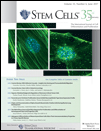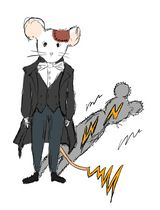- EN - English
- CN - 中文
zPACT: Tissue Clearing and Immunohistochemistry on Juvenile Zebrafish Brain
zPACT: 幼年斑马鱼脑的组织清除和免疫组化检测
发布: 2017年12月05日第7卷第23期 DOI: 10.21769/BioProtoc.2636 浏览次数: 11845
评审: Anonymous reviewer(s)
Abstract
In studies of brain function, it is essential to understand the underlying neuro-architecture. Very young zebrafish larvae are widely used for neuroarchitecture studies, due to their size and natural transparency. However, this model system has several limitations, due to the immaturity, high rates of development and limited behavioral repertoire of the animals used.
We describe here a modified version of the passive clearing technique (PACT) (Chung et al., 2013; Tomer et al., 2014; Yang et al., 2014; Treweek et al., 2015), which facilitates neuroanatomical studies on large specimens of aquatic species. This method was initially developed for zebrafish (Danio rerio) (Frétaud et al., 2017; Mayrhofer et al., 2017; Xavier et al., 2017), but has also been successfully tested on other fish, such as medaka (Oryzias latipes) (Dambroise et al., 2017), Mexican cave fish (Astyanax mexicaus) and African zebra mbuna (Metriaclima zebra), and on other aquatic species, such as Xenopus spp. (Xenopus laevis, Xenopus tropicalis) (Fini et al., 2017). This protocol, based on the CLARITY method developed and modified by Deisseroth’s laboratory and others (Chung et al., 2013; Tomer et al., 2014; Yang et al., 2014), was adapted for use in aquatic species, including zebrafish in particular (zPACT).
This protocol is designed to render zebrafish specimens optically transparent while preserving the overall architecture of the tissue, through crosslinking in a polyacrylamide/formaldehyde mesh. Most of the lipids present in the specimen are then removed by SDS treatment, to homogenize the refractive index of the specimen by eliminating light scattering at the water/lipid interface, which causes opacity. The final clearing step, consists of the incubation of the specimen in a fructose-based mounting medium (derived from SeeDB) (Ke et al., 2013), with a refractive index matching that of the objective lens of the microscope. The combination of this technique with the use of genetically modified zebrafish in which green fluorescent protein (GFP) is expressed in specific cell populations provides opportunities to describe anatomical details not visible with other techniques.
Background
Adult teleost fish (zebrafish, medaka) are increasingly being used as model vertebrates in studies extending from stem cells to brain development (Than-Trong and Bally-Cuif, 2015; Dambroise et al., 2017), in all aspects of physiological and medical research (Oksanen et al., 2013) and in studies of complex types of behavior, such as learning, memory and addiction (Bailey et al., 2015).
In its role as a scientific service provider, the Tefor Core Facility has developed a reliable tissue clearing technique for dense, neuronal tissues of several millimeters in diameter, to satisfy the demand for studies of large specimens of aquatic animals.
By creating a set of neuroanatomical atlases of different developmental stages, this protocol will serve as a resource for other laboratories wishing to integrate their data into these anatomical reference frameworks (ARFs). At the time of publication, the prototype of a 7dpf ARF is available from https://www.zebrafish.tefor.net/. The data accessible via this URL will subsequently be consolidated into an annotated 3D neuroanatomy atlas and enriched with standardized high-resolution confocal imaging data for different developmental stages. The Tefor Core Facility is currently developing ARFs for 5 dpf, 6 dpf, 7 dpf larval heads and juvenile brains. The development of ARFs for other stages will depend on the demand from members of the zebrafish research community.
The integration of new specimens into the corresponding ARF requires precise staging of the developmental stage of the specimen and the use of DiI stain, as described here. This dye is used as a fiducial marker for the computational alignment of 3D imaging data into the corresponding ARF. However, the protocol can also be run without these steps if a direct comparison of the generated data with the existing data pool is not required.
As a compromise between specimen size and maturity, we focused on juvenile zebrafish brains during the development of this protocol. Juvenile zebrafish brains are smaller than those from older fish, but may be considered mature (Filippi, 2010). Moreover, the use of sexually immature animals should reduce data variability due to sexual dimorphism (Ampatzis, 2012). The smaller size of these animals also makes the protocol faster, because all its steps are dependent on the penetration of the applied agents into the specimens. However, the animals used have nevertheless reached a sufficiently advanced developmental stage for extrapolation of the findings to older specimens.
Materials and Reagents
- Sterile 50 ml conical tubes (Corning, catalog number: 430291 )
- Sharp blade (single-sided razor blade (e.g., Razor Blade Company, catalog number: 62-0167 ) or appropriate scalpel blade (e.g., #10))
- 94 x 16 mm Petri dishes (Greiner Bio One International, catalog number: 632102 )
- Small spatula for manipulating anesthetized fish during staging
- Sterile 15 ml conical tubes (Corning, catalog number: 431470 )
- Paintbrush (e.g., Kolinsky France, Manet 630, size 3 )
- 60 x 15 mm Petri dishes (Greiner Bio One International, catalog number: 628160 )
- Multipolymer protective gloves (Shield Scientific, catalog number: 66 9253 )
- Parafilm M (Sigma-Aldrich, Parafilm, catalog number: P7543 )
- Glass tubes for a rotisserie hybridization oven (Fisher Scientific, catalog number: 11791436 )
- 2 ml Eppendorf tube (STARLAB INTERNATIONAL, catalog number: E1420-2000 )
- 3.2 ml transfer pipette (Carl Roth, catalog number: EA67.1 )
- 2 ml glass tubes (Carl Roth, catalog number: H303.1 )
- 0.22 µm-pore filter (SARSTEDT, catalog number: 83.1826.001 )
- 6-week-old zebrafish raised under standard conditions (density, feeding, etc.; Lawrence and Mason, 2012; Lawrence et al., 2016)
- Rotifers (Brachionus plicatilis)
- Brine shrimps (Artemia nauplii)
- Dry food (Skretting, Gemma Micro)
- Pure nitrogen (Air Liquide, ALPHAGAZ 1)
- Alexa Fluor 488-conjugated secondary antibody, goat anti-chicken IgY (H+L) (Thermo Fisher Scientific, InvitrogenTM, catalog number: A-11039 )
- DiIC18(3) (Thermo Fisher Scientific, InvitrogenTM, catalog number: D282 )
- Dimethyl sulphoxide (DMSO) (Carl Roth, catalog number: 4720.1 )
- Primary antibody directed against GFP (chicken) (Aves Lab, catalog number: GFP-1020 )
- Low-melting point agarose (Sigma-Aldrich, catalog number: A4018 )
- Mineral oil (Carl Roth, catalog number: HP50.3 )
- Tricaine mesylate (MS222) (Sigma-Aldrich, catalog number: A5040 )
- Sodium bicarbonate (Carl Roth, catalog number: 0965.2 )
- 20x PBS (Santa Cruz Biotechnology, catalog number: sc-362183 )
- 16% formaldehyde (w/v), methanol-free (Thermo Fisher Scientific, Thermo ScientificTM, catalog number: 28908 )
- 4% formaldehyde solution, methanol-free (w/v) (PFA) (Thermo Fisher Scientific, Thermo ScientificTM, catalog number: 28908 )
- Tween 20 (Sigma-Aldrich, catalog number: P7949 )
- 40% acrylamide solution in H2O (Sigma-Aldrich, catalog number: 01697 )
- VA-044 initiator (Wako Pure Chemical Industries, catalog number: 017-19362 )
- SDS pellet (Carl Roth, catalog number: CN30.3 )
- Boric acid (Carl Roth, catalog number: 6943.1 )
- 20x SSC (Carl Roth, catalog number: 1054.1 )
- Formamide (CH3NO) (Carl Roth, catalog number: 6749.3 )
- H2O2 solution (30%) (Carl Roth, catalog number: CP26.5 )
- Sodium azide (Sigma-Aldrich, catalog number: S2002 )
- Normal goat serum (NGS) (Antibodies, catalog number: 54-410 )
- Triton X-100 (Fisher Scientific, catalog number: BP151-500 )
- D(-)-fructose (Carl Roth, catalog number: 4981.6 )
- SYLGARD 184 (Sigma-Aldrich, catalog number: 761036 )
- 10x MS222 solution (see Recipe 1)
- Fixing solution (4% PFA, 0.01 M PBS, 0.1% Tween 20) (see Recipe 2)
- Sylgard-coated Petri dish (see Recipe 3)
- PBST (1x PBS, 0.01% Tween 20) (see Recipe 4)
- Hydrogel solution (see Recipe 5)
- SDS solution (8% SDS, 0.2 M boric acid, pH 8.5) (see Recipe 6)
- Depigmentation (see Recipe 7)
- SSC 0.5x-Tween 20
- Depigmentation solution
- SSC 0.5x-Tween 20
- Storage solution (see Recipe 8)
- Blocking solution (see Recipe 9)
- Staining solution (see Recipe 10)
- Fructose-based high-refractive index solution (fbHRI) (see Recipe 11)
Equipment
- 3 fish tanks/line (e.g., Tecniplast 1 L Breeding Tank without the internal part)
- Laminated measuring grid (see Figure 1)
- Fume hood
- Ice bath & refrigerator
- Embryo spoon (Carl Roth, catalog number: TL85.1 )
- Dumont tweezers, straight (World Precision Instruments, catalog number: 500336 )
- Dumont tweezers, straight (World Precision Instruments, catalog number: 14099 )
- Dumont tweezers, 45° angle (World Precision Instruments, catalog number: 500234 )
- Stereomicroscope (Olympus, model: SZX10 )
- Fiber light source (Olympus, model: KL 2500 LED )
- Heated vacuum desiccator (VWR, SELECTA, catalog number: SELE4000474 )
- Hotplate (Labexchange, Bioblock Scientific, model: AM3001K )
- Vacuum pump (Savant, model: Gel Pump GP 110 )
- Histology processing cassettes (Simport, model: M503-12 )
- 400 ml beaker (VWR, catalog number: 213-1125 )
- 600 ml beaker (VWR, catalog number: 213-1126 )
- Rotisserie hybridization oven (Grant Boekel, model: HIR 1011 )
- 3D rocker Polymax 1040 (Heidolph Instruments, catalog number: 0 36130320 )
- Refractometer (KRUSS Optronic, catalog number: DR 301-95 )
- Leica TCS SP8 laser scanning microscope (Leica Microsystems, model: Leica TCS SP8 )
- 2 photomultipliers for the simultaneous detection of two channels
- Leica HC FLUOTAR L 25x/1.00 IMM motCorr objective (Leica Microsystems, catalog number: 15507703 )
- 2 photomultipliers for the simultaneous detection of two channels
- Heavy magnetic stirring bar (SP Scienceware - Bel-Art Products - H-B Instrument, catalog number: F37118-0002 )
Software
- Fiji/ImageJ (http://fiji.sc)
- Amira (https://www.fei.com/software/amira-3d-for-life-sciences/)
- ITK-snap (http://www.itksnap.org)
Procedure
文章信息
版权信息
© 2017 The Authors; exclusive licensee Bio-protocol LLC.
如何引用
Affaticati, P., Simion, M., De Job, E., Rivière, L., Hermel, J., Machado, E., Joly, J. and Jenett, A. (2017). zPACT: Tissue Clearing and Immunohistochemistry on Juvenile Zebrafish Brain. Bio-protocol 7(23): e2636. DOI: 10.21769/BioProtoc.2636.
分类
神经科学 > 神经解剖学和神经环路 > 动物模型
细胞生物学 > 组织分析 > 组织染色
您对这篇实验方法有问题吗?
在此处发布您的问题,我们将邀请本文作者来回答。同时,我们会将您的问题发布到Bio-protocol Exchange,以便寻求社区成员的帮助。
提问指南
+ 问题描述
写下详细的问题描述,包括所有有助于他人回答您问题的信息(例如实验过程、条件和相关图像等)。
Share
Bluesky
X
Copy link














